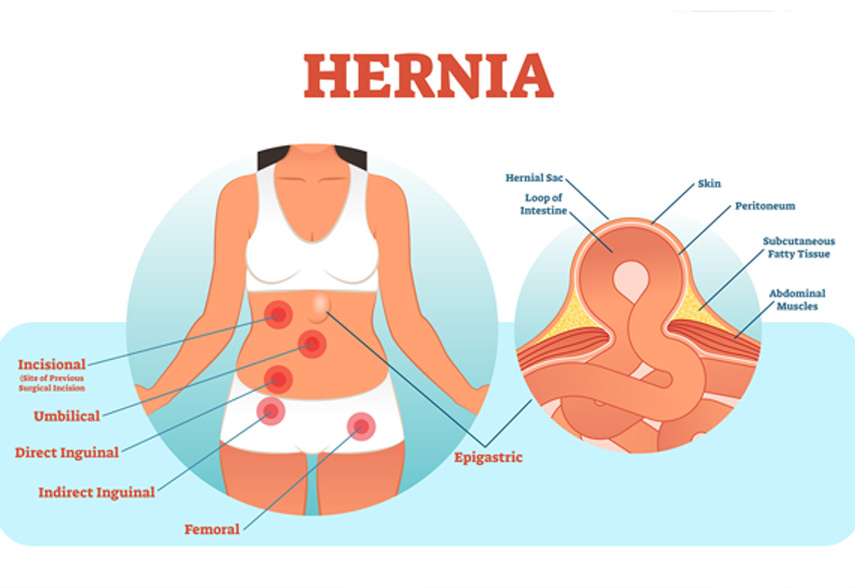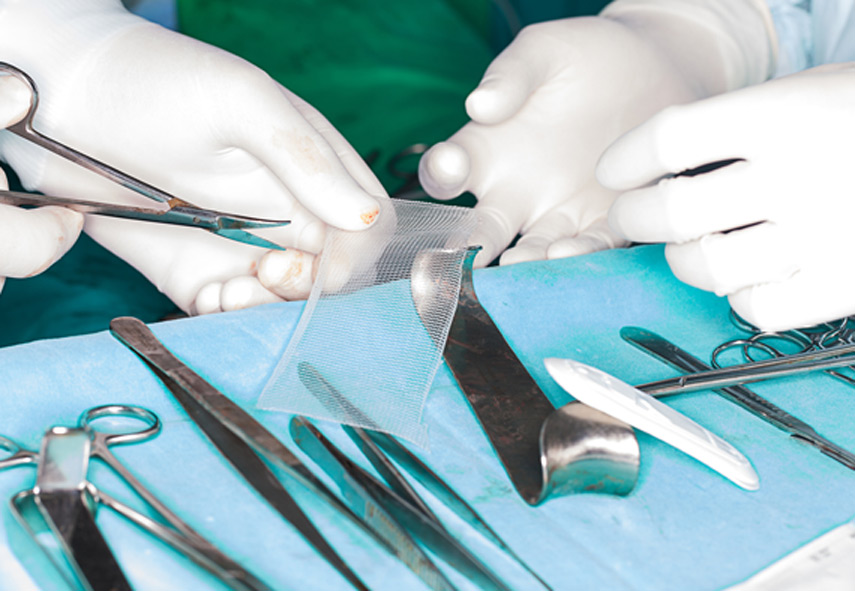A hiatal hernia is common among obese patients, especially obese patients. Patients with a body mass index (BMI) greater than 30 are 4.2 times more likely to have a hiatal hernia than patients with a lower BMI. Thus, it’s common to have hiatal hernia repair done during bariatric surgery.
Hernia Repair

What is a Hiatal Hernia?
A hiatal hernia is characterized by bulging of the upper part of the stomach through an opening in the diaphragm (called hiatus) up to the chest. The most common symptoms of a hiatal hernia are chest pain, heartburn, vomiting, bloating, acid reflux, or even a bad taste in the mouth. The condition is difficult to diagnose because many patients suffering from a hiatal hernia remain asymptomatic.
Femoral Hernia
In the case of a femoral hernia, the protrusion occurs through the femoral canal, which is located in the upper thigh and groin area. Depending on the size of the hernia, it may cause discomfort and hip pain.
Hiatal Hernia
Patients with a hiatal hernia have tissue protruding from the upper stomach through a weak spot in the diaphragm muscle that separates the abdomen and chest. The hernia may be accompanied by abdominal pain or heartburn.
Incisional Hernia
An incisional hernia occurs after surgery if the surgery site was not fully closed. This type of hernia is characterized by tissue lying beneath the surgical scar and pushing against the weakened area. Patients will need surgical intervention to address the pain and discomfort caused by the hernia.


Inguinal Hernia
An inguinal hernia is characterized by a protrusion of the intestines through the right or left inguinal canal. The inguinal canal is located in the groin and lower abdomen.
Sports Hernia
Playing sports like soccer, hockey, football, or wrestling can lead to groin-related pain, or a sports hernia. This type of hernia occurs in a weak spot in the lower abdominal wall muscles or tendons. Patients will typically need surgery to treat the sports hernia.
Spigelian Hernia
A spigelian hernia forms within the lower part or mid-section of the abdomen through a layer of abdominal wall muscles. This type of hernia is often unnoticed until the patient experiences pain or a bowel obstruction.
Umbilical Hernia
An umbilical hernia occurs when a portion of the patient’s intestine pushes through their navel where the umbilical cord was passed through. This type of hernia typically occurs in infants in children, but may also be found in adults. Symptoms of an umbilical hernia can include discomfort, nausea, pain, discoloration, or swelling around the lump. Treatment will vary depending on the size and location of the hernia.
The Sleeve Center has a team of medical professionals performing hernia repair for bariatric patients. Give us a call to schedule an appointment and to learn more about surgery.
Contact Info
3420 Bristol St #700, Costa Mesa, CA 92626, USA
Orange Location
1310 W Stewart Dr. Suite 310, Orange, CA 92868, USA
*DISCLAIMER
In compliance with 16 CFR 255 and Federal Trade Commission Guidelines on the use of endorsements and testimonials in the marketing and advertising of websites:
The testimonials, statements, and opinions presented on our website are only applicable to the individuals depicted, and may not be representative of the experience of others. The testimonials are voluntary provided and are not paid, nor were they provided with free products, services, or any benefits in exchange for said statements. The testimonials are not indicative of future results or success of any other individuals. South Coast Specialty Surgery Center cannot and does not guarantee the medical outcome or the results of individuals utilizing the services provided by us or the providers in our network, or from any of the websites we link, or refer to. The testimonials and endorsements found on the site for the benefit of the site or individual services or procedures are, to the best of our knowledge, the true statements and beliefs of the individuals providing them. In short, surgery involves risk, results may vary, and outcomes are not guaranteed.
Some pages of this website may feature a depiction of a model showing emphasis of the torso. Product names may be mentioned in testimonials or elsewhere, and are trademarks or registered trademarks of their respective holders. Please refer to our Terms and Risks of Surgery pages for more information. Gastric Sleeve Surgery Centers performs Gastric Sleeve Surgery in Orange County, San Diego, Los Angeles, Riverside County and other location in Southern
California.
